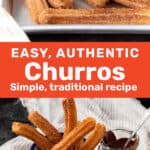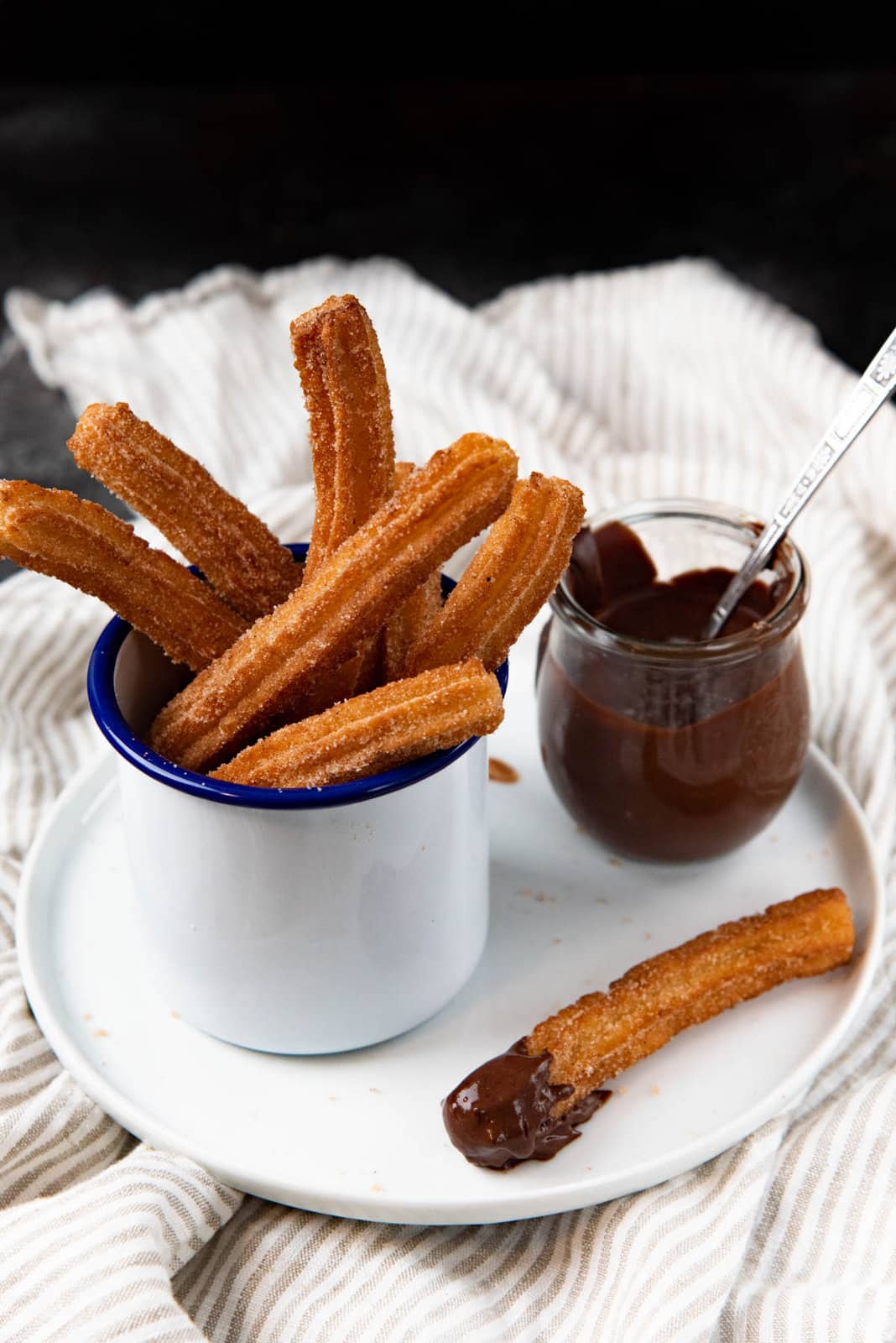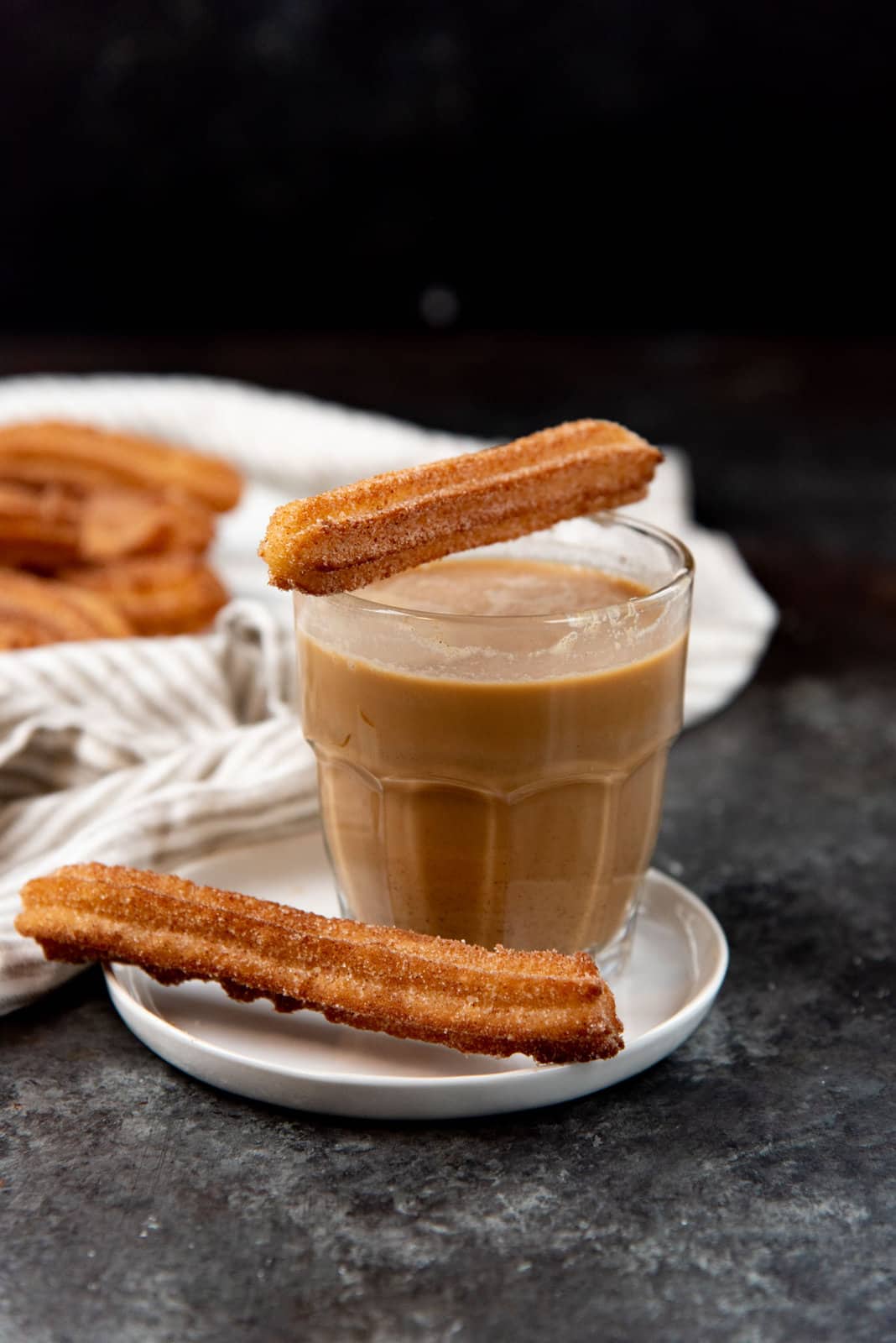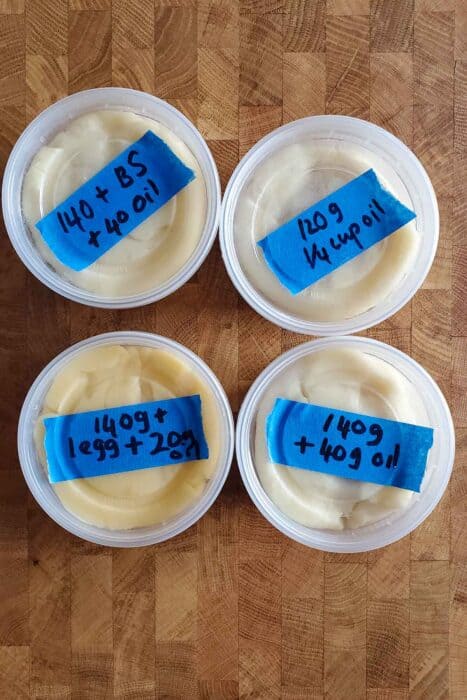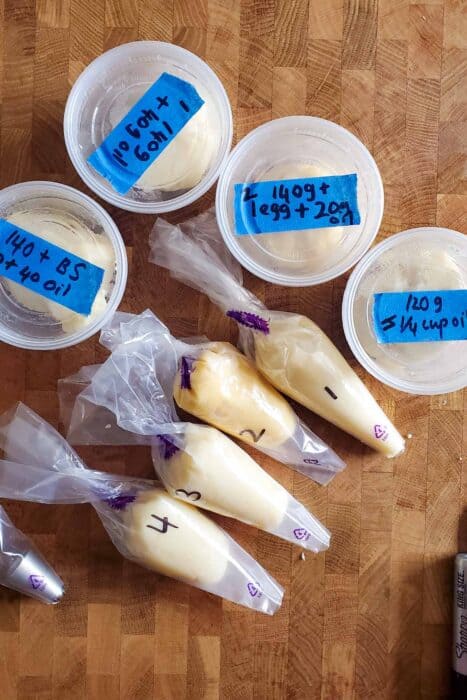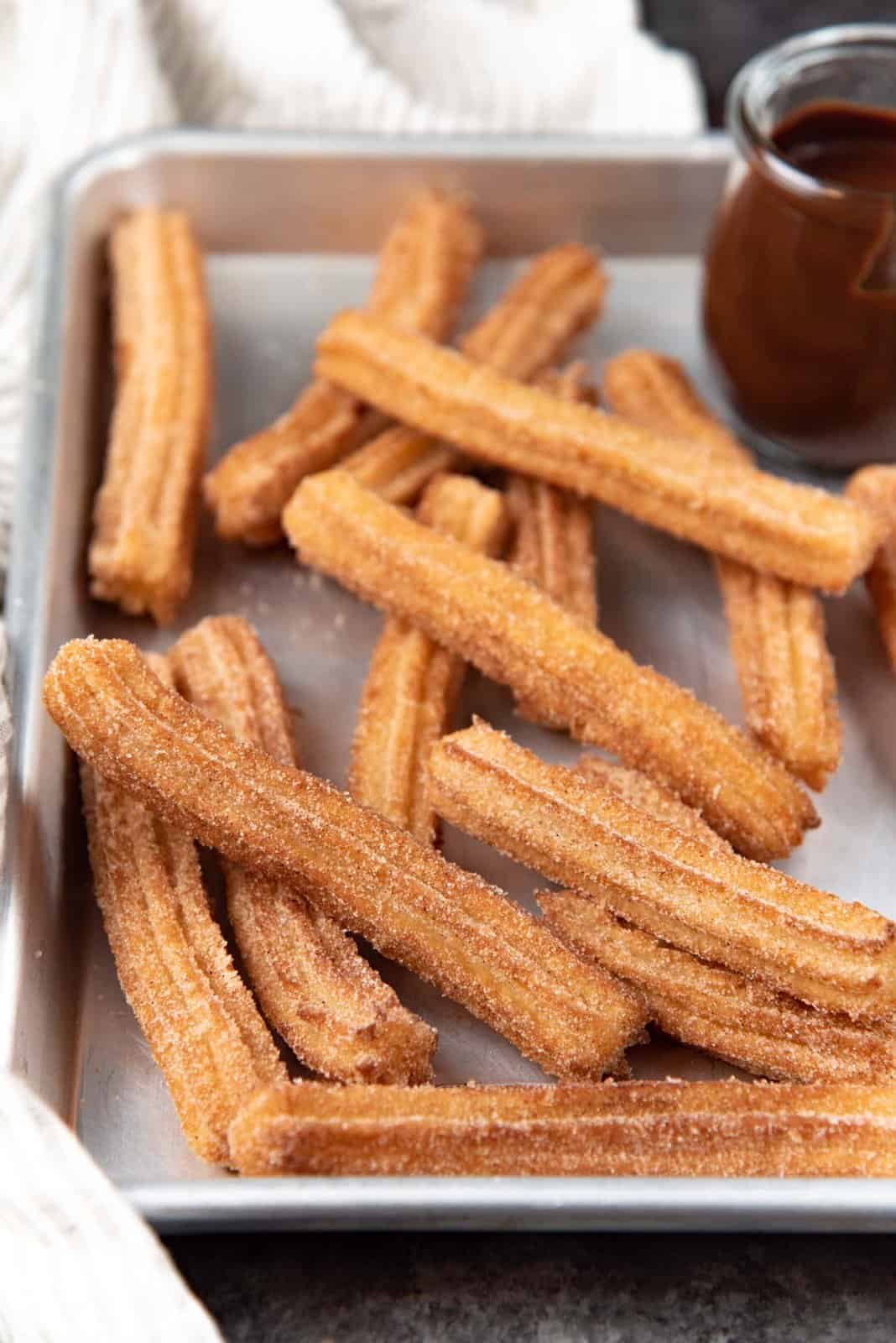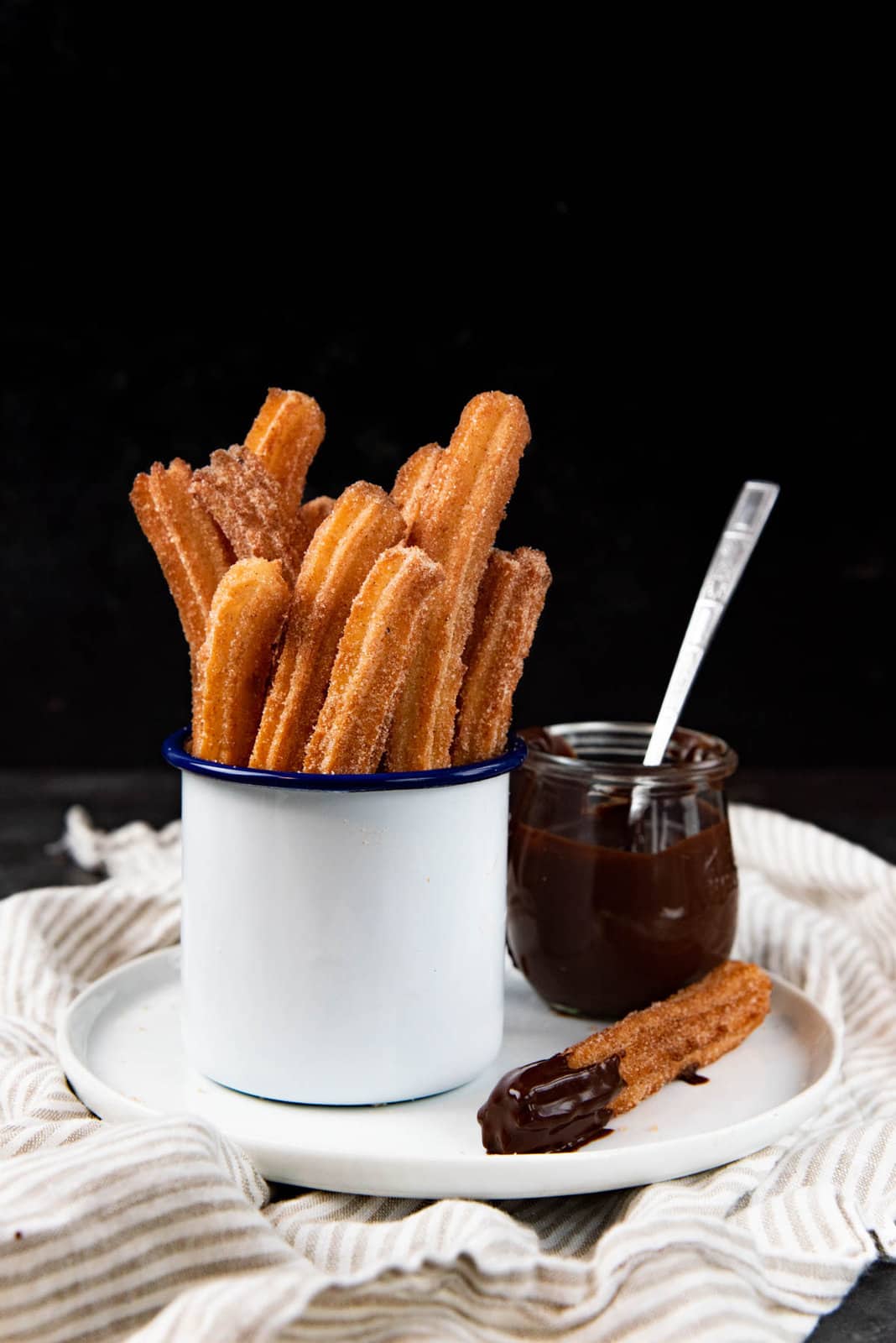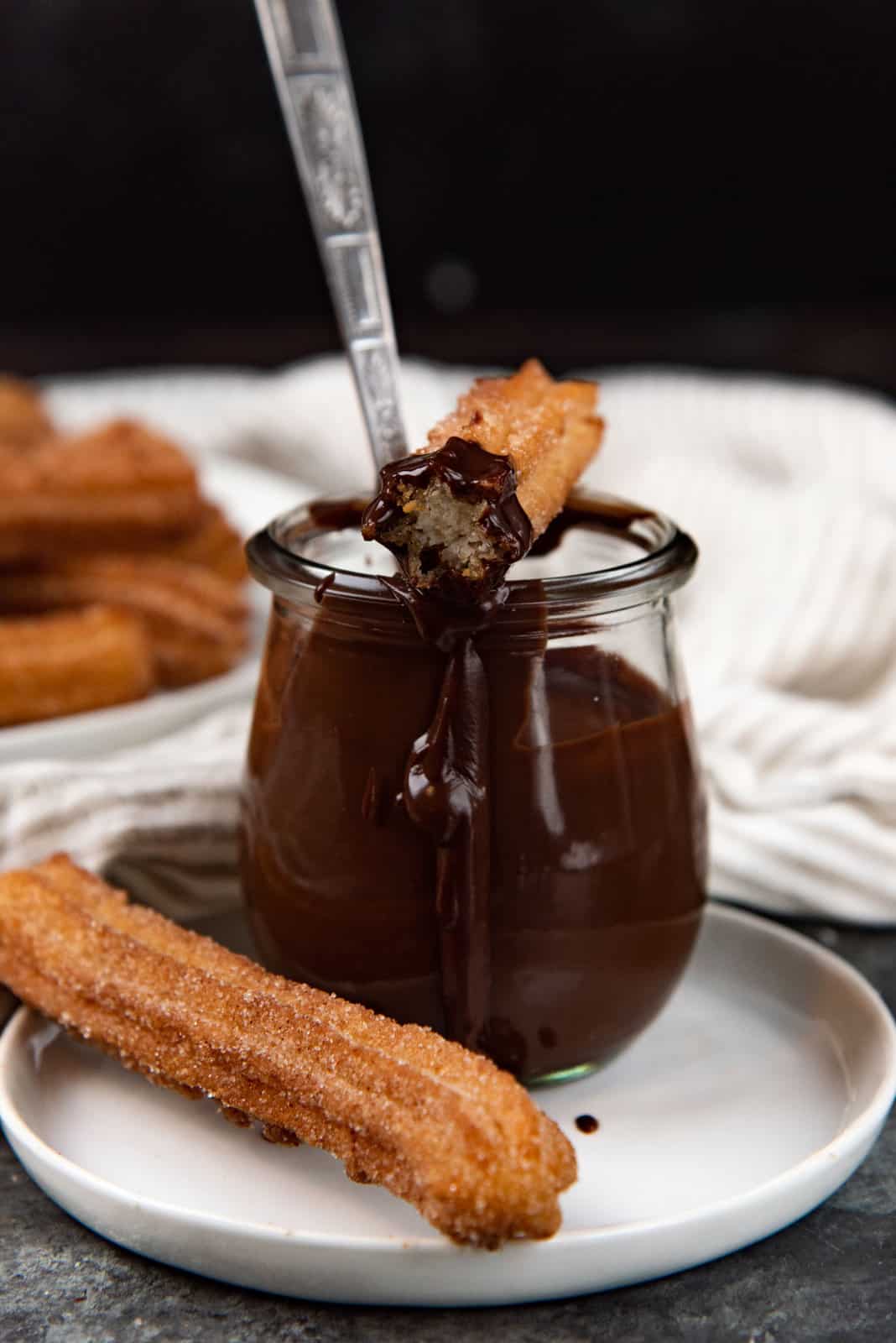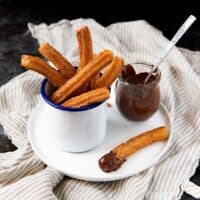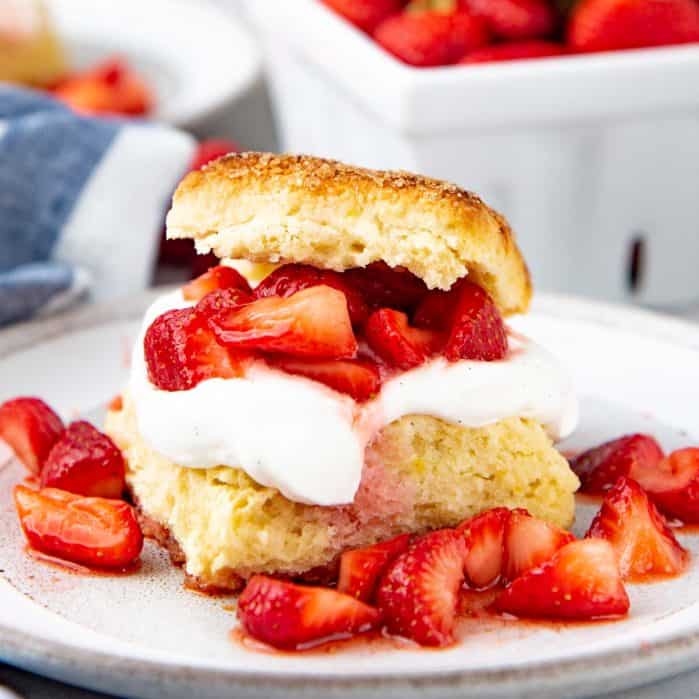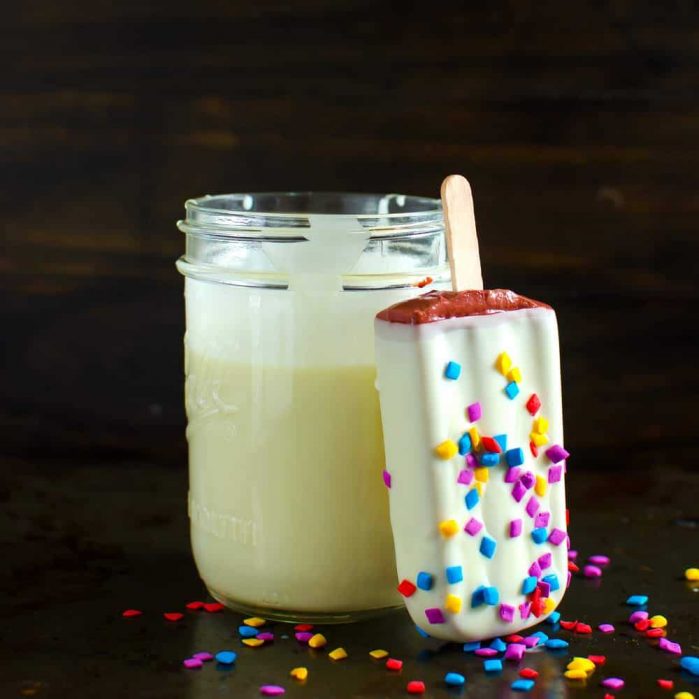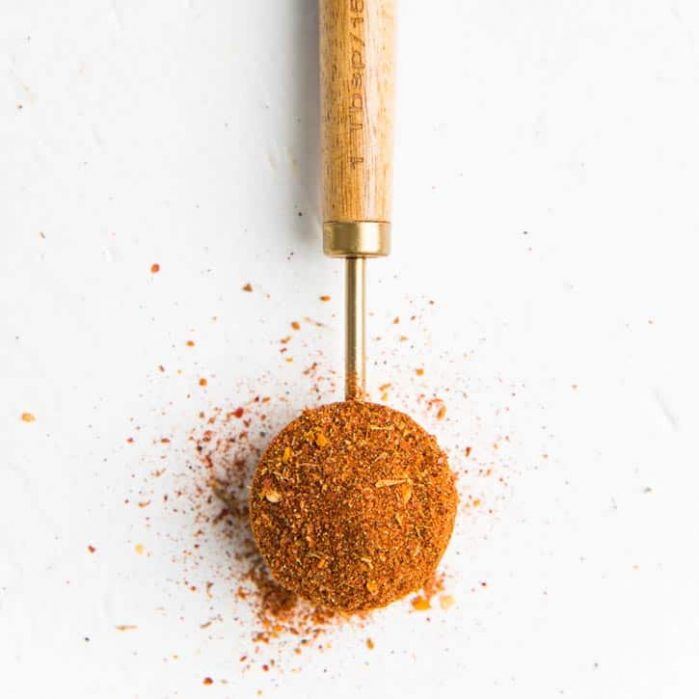The best churros can be made with the simplest of ingredients. So easy, with a super crunchy crust, and a soft & delicious center. Just the way classic authentic churros are meant to be! Pair with a chocolate hot fudge sauce or an easy dulce de leche for a decadent treat.
Why I love this recipe
I test four methods for making churros, from traditional churros to the more common “new-fangled” recipes you’d see online, so that I can show you which one is better (in my humble opinion). You can see the results for yourself and choose which recipe you prefer. But I definitely have a favorite! It’s super easy and only needs FOUR ingredients! I watched Spanish videos to study the method of how they make their churros to further familiarize myself with how traditional churros are made. Then I applied those old-school principles to a homemade recipe so you can easily make delicious churros at home! This churro recipe is naturally vegan, so you can make it for any dinner party / potluck and know that anyone can enjoy ’em! I’ll share tips on how to make perfect churros for the best, most crispy results. Plus, I’ll show you how I prepare the dough for a crowd, so that more people can eat churros together! The more, the merrier. Along with dessert nachos, these are some of my favorite crowd-friendly desserts to make.
Feel free to skip straight to the recipe, if you don’t want to read about the different recipe tests I did, and all the results.
Origin of authentic churros
Churros are fried dough sticks that are thought to originate from Spain or Portugal. They were brought to Mexico by the Spanish, and they are still very popular in Spain as well as Mexico. But churros are of course very well known around the world now. There isn’t much of a difference between Spanish and Mexican churros, apart from how they are served. Spain – with sugar and a thick hot chocolate Mexico – with cinnamon sugar and chocolate sauce or dulce de leche But they can be eaten plain without any dipping sauce as well.
Churro dough and choux pastry dough
My first experience of churros was when I made it myself at home, a long time ago. Due to limited information on the internet, I ended up making choux pastry dough instead and fried it! While it was delicious, it was certainly not a churro. It wasn’t until I moved to Australia when I finally got to eat a proper churro that was crunchy on the outside, and soft and chewy on the inside. A lot of people do think churros are made with choux pastry dough, but that’s not the case. However, the first step of making the dough is very similar between churros and choux pastry. Some newer recipes do add eggs as well, but far less than with choux pastry, and authentic churros do not use eggs at all. That being said, there is ABSOLUTELY nothing wrong with switching up a recipe from its origins if it works for you! So the addition of butter and eggs certainly does not make the recipe wrong. Just different. With a different flavor profile. That’s half the fun of cooking and baking! (Other half being eating, of course.)
What is an authentic traditional churros recipe?
The base for churros is similar to choux pastry. But the ingredients list is shorter.
Water Flour Oil Optional – salt and sugar for flavor.
Other recipes also add eggs and butter to the churro dough. Butter and eggs add flavor, while eggs also give the churros a little “lift” and structure – making the inside lighter. So I’m going to make churros the traditional way, and also make some using additional ingredients that are present in the some newer recipes, and then compare the taste and texture of the churros.
Four methods of making churros
Ingredients to make churros
The “traditional” recipe
This traditional recipe only uses water, flour, and oil as the base. Without eggs, it’s a vegan churro.
1 cup / 240 g water 1 cup / 140 g flour Salt Oil (traditionally olive oil) You can choose to add some sugar or leave it out if you’re coating the churros with sugar later.
Second recipe
This is what I usually see online. Most recipes follow a formula that is similar to choux pastry, but with just 1 egg instead of multiple.
1 cup / 240 g water 1 cup / 140 g flour Salt Butter (but I use oil here) 1 egg
Third recipe
In this recipe, I make the authentic churro recipe but I add just a little baking powder. The baking powder acts to make the churros more airy on the inside. The idea is to replicate the airy churros that I expect with the addition of eggs. This way I can still make vegan churros as well.
1 cup / 240 g water 1 cup / 140 g flour Salt Baking powder Oil
Fourth recipe
I’ve seen some traditional churros being made on Youtube that served as inspiration for this iteration. While they do not share any recipes in those YT videos, I can see the texture of the dough. It looks very soft and easily piped into the hot oil. To mimic this, I wanted to try a recipe with more water and less flour.
1 cup / 240 g water 1 cup / 120 g flour (spooned and leveled) Salt Oil
Results from the different methods
Dough
The dough was softest with the fourth recipe (less flour), and it was very difficult to “knead”. The second recipe with eggs was the second softest, but I could still easily handle to dough. The traditional recipe and third recipe (with baking powder) had a similar feel and could be handled well without being too firm. They were all very smooth in texture.
Frying the dough
All churros were fried at the same temperature and for a similar length of time (about 2.5 minutes). The fourth recipe piped out somewhat irregularly due to the high moisture content. The third recipe browned a little faster than others, and it is possible that the baking powder had a part to play in it.
Appearance
The second dough piped the smoothest because it was a soft dough and didn’t form jagged edges as it was piped. The second and third dough also had bubbles on the surface. Possibly because of the eggs ( in the second batch) and the baking powder (in the third batch).
Crunch factor
Straight out of the fryer, they were all SUPER crisp! The churro that lost the crunch the earliest was the second recipe with the eggs. The fourth recipe was too crunchy and hard. The crunch factor for the first and third recipe was amazing, and they stayed crunchy for hours! The jagged edges of the first and third churro batched probably also contributed to the crunch factor.
Flavor
I added salt and sugar to all four versions so that all the churros had good flavor and were not bland. I also did NOT coat any of them with sugar so that I can taste the dough, and the texture inside. Flavor-wise, the second recipe definitely had more flavor because of the richness yielded by the egg, and it was also more puffed up and airy because of the egg. But the crunchiness was minimal and it didn’t feel like a churro unless I ate it piping hot from the fryer. The “worst” was the fourth recipe. The churro was too airy in the middle and had no texture to contrast with the outside. The first (authentic) recipe and the third recipe had good flavor too. Olive oil definitely added more flavor than vegetable oil. But the contrast between the crunchy outside to the soft inside was absolute perfection! The difference between the authentic recipe and the baking powder recipe was the inside of the churro. The authentic recipe had a soft, but more dense and almost chewy center. While the baking soda makes the center a little more airy (but still soft).
Conclusion
The winner, in my opinion, is DEFINITELY the traditional recipe! But the addition of baking powder (third recipe) provides a little airiness to the churros too. So it’s a close second. I would be VERY happy with churros made with EITHER of these recipes, but I do prefer the first.
How to make churros
Ingredients needed
Water (boiling water) Flour Oil (olive oil for more flavor) Salt Optional – baking powder Optional – sugar
You only need four ingredients to make the churro dough! If you’re coating the churros with cinnamon sugar, you don’t need to add sugar to the dough (though it does help with the caramelization). I personally don’t even add baking powder to the recipe. I don’t think it makes a big enough difference when you’re eating churros with cinnamon sugar and melted chocolate!
Method for making the dough
Place 1 cup of boiling water in a saucepan with oil, salt, and sugar, and stir to dissolve. Heat on high heat to bring it back to a boil quickly. You can start with tap water too, but there will be some evaporation, which you want to avoid. So add about 1 tbsp extra water if starting from cold. When the water is boiling, remove it from the heat and immediately add the flour. Stir to hydrate all of the flour. If there are some lumps, do not worry! Close the lid and let the dough hydrate for about 1 – 2 minutes. After hydrating, “knead” the dough about 4 – 5 times by folding the dough over itself using your hands (if it’s not too hot handle) or the spatula. There shouldn’t be any dry flour spots left afterwards. After this step, you should have a soft, pliable dough. Cover with plastic wrap and set aside until it has cooled down.
How to fry the churros
In a dutch oven or large pot, pour enough vegetable oil so that it’s about 3 – 4 inches in depth. Heat the oil over medium heat until it reaches 350 – 375 F. Place the churro dough in a piping bag with an attached closed star tip. I used Ateco 845 tip with a 1/2 inch opening. A closed star tip will give you the best and classic churro shape. Also keep a small scissor or knife (that is dipped in water) close by. You will use this to cut the dough as it’s piped out of the piping bag. When the oil is hot, pipe out the churro dough into the hot oil. Hold the tip about 1 – 2 inches above the oil and pipe the dough INTO the oil. This will prevent the churro from splashing into the oil and causing any burns! Once you’ve piped about 5 – 6 inches of dough, use the knife or scissor to snip the dough (above the oil surface). ALTERNATIVELY, you can pipe the churro onto a parchment paper separately. Since the dough isn’t super soft, you can gently pick it up and lower it into the oil using a slotted spoon. This way you avoid getting your hands near the hot oil. Repeat with a few more churros but take care not to overcrowd the oil. The oil temperature should remain at 350 F. Fry the churros for about 2 – 3 minutes, carefully turning them occasionally for even browning. If they stick together a little, don’t worry, just keep moving them in the oil so that they won’t stick together too much and will easily separate once fried. Prevent them from sticking to each other all the way, because this is harder to separate. When the churros are golden brown in color, remove them from the oil, and let them drain for a minute on a paper towel. Then while still warm, toss the churro in the sugar mixture (plain sugar or vanilla sugar or cinnamon sugar). Serve while they are still warm.
Serving suggestions
These authentic churros are perfect as they are! BUT, you can absolutely serve them with dipping sauces too. Here are some suggestions,
Chocolate sauce Nutella Thick hot chocolate like this classic French hot chocolate Dulce de leche Caramel sauce Butterscotch sauce Custard desserts Berry coulis sauce
Tips for perfecting this churros recipe
You absolutely must have 240 mL of BOILING water. Not boiled water or very hot water. BOILING WATER. So, make sure to measure 240 mL boiling water and bring it back to a boil with salt, oil, and sugar (if using) on high heat, reducing evaporation. If using tap water, just add another tablespoon of water or so to allow for evaporation as the water boils. If you’re using baking powder, make sure to whisk the baking powder VERY well with the flour. Uneven spots of leavener can cause the churros to break apart sometimes. The dough will become stiffer as it cools down. So piping might be hard if you don’t have a strong grip. I prefer to place only half of the dough in the piping bag, so I have better control over piping out churros. You want to squeeze the bag firmly for the dough to come out evenly. If you have too much dough in the piping bag, this can get tricky. Heat the oil to 350 – 375 F, and maintain the frying temperature around 350 F+. Any lower will make the churros oily, and dry them out. If the oil is too hot, the churros will darken too fast and the center will be raw. Two – three minutes of frying is the sweet spot. I like my churros just a touch darker, because I like the outside to be very crunchy even with the cinnamon sugar coating. But this is up to you. If you use a piping nozzle that is smaller than what I recommend here, the frying time WILL change. A smaller nozzle will produce thinner churros. Thinner churros – less frying time. Thicker churros – more frying time. Stagger the churros when frying them. I introduce churros into the oil every 30 seconds or so. This will minimize them sticking to each other. I don’t know why, but raw churros seem to LOVE to stick to each other when they fry. I use a wooden skewer to keep them apart. Let them drain a little before coating the churros with sugar. Plain sugar or cinnamon sugar are both acceptable for authentic, traditional churros. But they are just as delicious with just a dipping sauce and no sugar coating.
Make ahead tips
Storage instructions and frequently asked questions
Final recipe notes
After multiple tests of different recipes, I see why the traditional method of making churros yields the best results! Crunchy on the outside, soft and with a little chew on the inside – what’s not to love? That being said, this is MY favorite way to make churros. It’s super simple. Only four ingredients needed for the dough + plus 2 more for the coating. If you prefer churros made with eggs, that’s perfectly OK. You can add 1 egg to this very same recipe! However, this eggless recipe for churros gives me the closest result to the most traditional churros. My favorite way to serve these easy churros is with an easy chocolate sauce! But dulce de leche is a great choice too.
